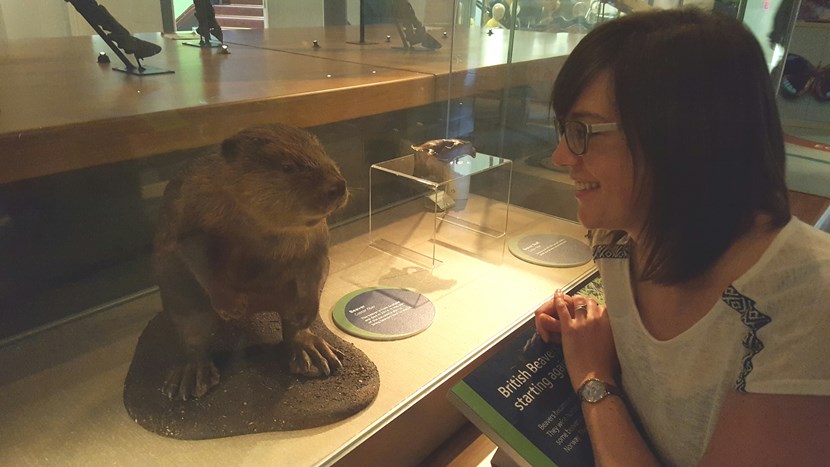
06 Jul 2017
Curators beavering away on dam good conservation display
It’s been more than 400 years since wild beavers could be spotted busily building their dams in the rivers and forests of the UK.
Ruthlessly hunted for their pelts, meat and scent glands, which were used in perfumes and medicines, nature’s greatest lumberjacks were sadly wiped out on our shores by the 16th century.
Now a successful new project has reintroduced the industrious rodents to small parts of England and Scotland where they are helping to naturally control the growth of trees and stimulate local ecosystems.
Curators at Leeds City Museum have also been doing their bit to help the country’s budding Eurasian beaver population with a new conservation display aimed at highlighting both the importance of the species and the mistakes which led to its extinction.
The display, which can be found in the museum’s spectacular Life on Earth gallery, includes a newly-stuffed Scottish beaver, a British beaver skull from Wawne in East Yorkshire and a hat made from beaver fur along with footage designed to show how and why such a well-established species disappeared.
Clare Brown, Leeds Museums and Galleries curator of natural sciences, said: “It’s been fascinating to see wild beavers reintroduced to the UK, to watch how well they have adapted to modern Britain and to observe the important impact they have had on local ecosystems.
“It’s important for us to remember that a species like the wild beaver didn’t disappear naturally: it became extinct as a direct result of humans and our actions. This is a great opportunity to remember that but also to shine light on how humans are working to rectify our past mistakes.
“Through displays like this, we can highlight the beneficial role animals like the beaver have to play, the fragility of the natural world and can better understand the devastating consequences our behaviour can have on the environment. It’s also great to be able to show off our skull from Wawne – it’s proof that we used to have beavers roaming Yorkshire.”
Beavers first reappeared in the wild in the UK around 10 years ago when a small group which had escaped captivity or were illegally released set up on western Scotland’s River Tay.
A few years later, in 2009, more beavers were taken from Norway to the Knapdale Forest, Argyll, where Scottish Natural Heritage (SNH) oversaw a government-sanctioned trial reintroduction.
Since then more than 50 settlements have been established and the first kit, the name for a baby beaver, was born in 2010.
Beavers build their dams to raise water levels around their lodges, which in turn attracts local species which prefer slow-moving water, like dragonflies and frogs.
Councillor Brian Selby, Leeds City Council’s lead member for museums and galleries, said: “This display is an excellent way to highlight the compelling story of how beavers have once again become a feature of the British countryside and the important part they have to play in supporting other members of the animal kingdom.
“It’s also important that we use out incredible natural sciences collection in this way to better understand our own place in the world around us and the effect we have on our planet.”
For more details about Leeds City Museum, please visit: http://www.leeds.gov.uk/museumsandgalleries/Pages/Leeds-City-Museum.aspx
ENDS
For media enquiries contact:
Leeds City Council Communications team
communicationsteam@leeds.gov.uk